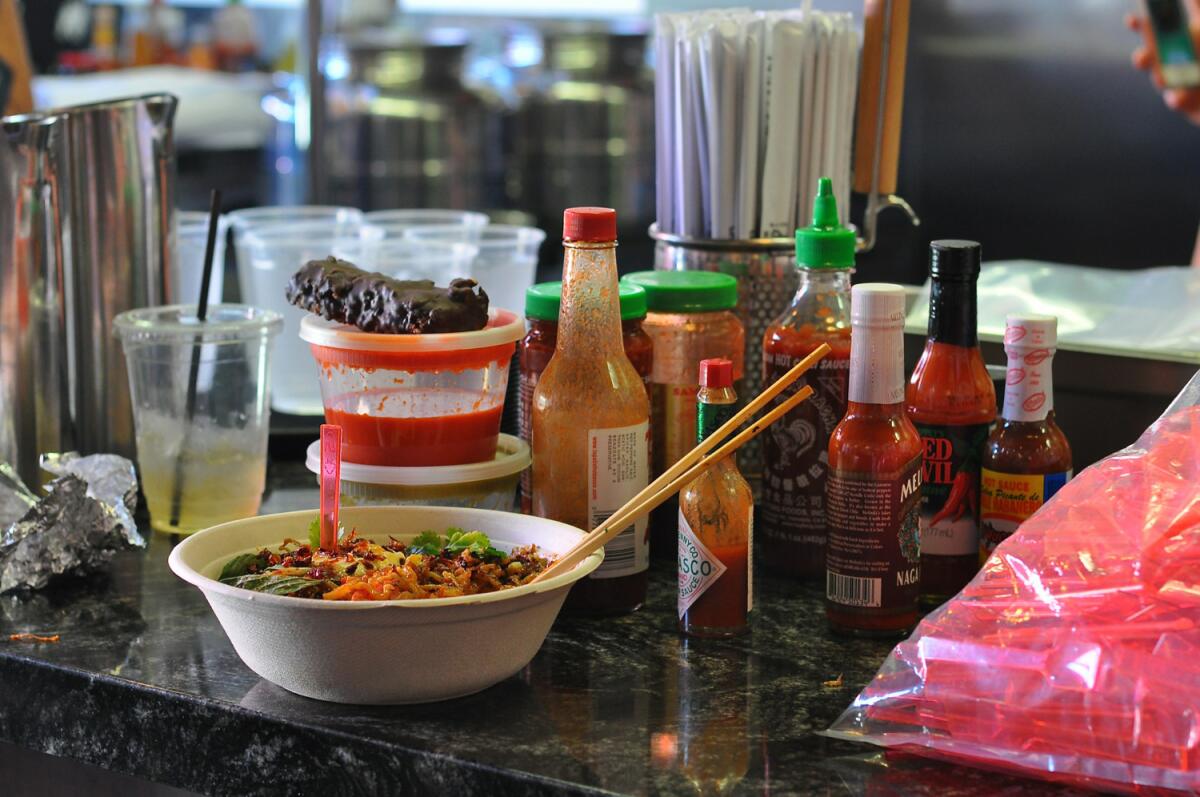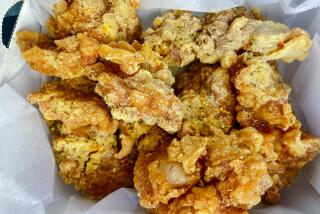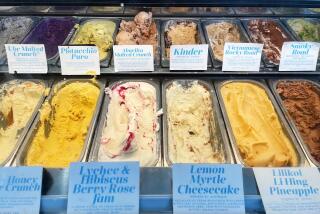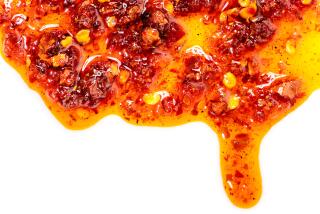Guide: Eight great condiments of the world: A highly selective guide

Since we don’t have the space or time to count, define or even (sadly) try all the condiments in the world, we thought we’d pick out eight of our favorites. Here are eight wonders of the world, as it were, each in their own small bowls.
Fish sauce: A mother sauce (to steal a term from the French) of Southeast Asia in which lots of fish are fermented in vats of brine. Then the liquid is aged in the sun and bottled. Imagine.
Soy sauce: Another mother sauce of Asia (or maybe it’s the universal condiment). Ingredients: usually soy beans, wheat and salt.
Gochujang: A pungent Korean paste made from red chiles, glutinous rice, soybeans and salt. Traditionally fermented in pots, earthenware and outdoors — for many obvious reasons.
Mayonnaise: No, we’re not talking about the stark white globs you find in plastic tubs at the grocery store. Real mayo is a pale yellow color, made with egg yolks, vinegar, Dijon mustard, lemon juice, oil and salt. It will make your sandwiches taste like they are on flavor steroids.
Mustard: Most of us are familiar with hot mustard (the one at Philippe’s will burn your nostrils); yellow mustard (the only acceptable hot dog condiment); Dijon mustard (ideal French fry dip) and Asian mustard (a must for dim sum). Usually made with mustard seeds, salt and other seasonings, sugar, vinegar and water.
Ketchup: To quote chef Sang Yoon, who makes his own hot sauce for Lukshon and bans ketchup from Father’s Office: “Seems it originated in China. Originally a thin, brown, pickled and fermented fish-based sauce with added fruit that more resembled a funky soy sauce, the original ke-tsiap would probably destroy a perfectly good order of fries.”
Worcestershire sauce: According to an anecdotal mention in the Oxford Companion to Food, it’s the result of an accident in a chemist’s shop in Worcester, England (an Indian spice vinegar fermented and was forgotten in a cellar). The end result (vinegars, molasses, sugars, salt, anchovies, tamarind, onion, garlic) made its way to become an emblematic part of British food. It’s the bridge between fish sauce and steak sauce.
Sriracha : A variation of traditional Thai Sriracha, the product we know was created in 1980 by David Tran of Huy Fong Foods and manufactured in Irwindale. Ingredients include chili, sugar, salt, garlic, distilled vinegar, potassium sorbate, sodium, bisulfate and xanthan gum. It’s known for its bright red bottle, Kelly green cap and sketch of a rooster (hence sometimes called “rooster sauce”).
—Los Angeles Times Food staff
More to Read
Eat your way across L.A.
Get our weekly Tasting Notes newsletter for reviews, news and more.
You may occasionally receive promotional content from the Los Angeles Times.










